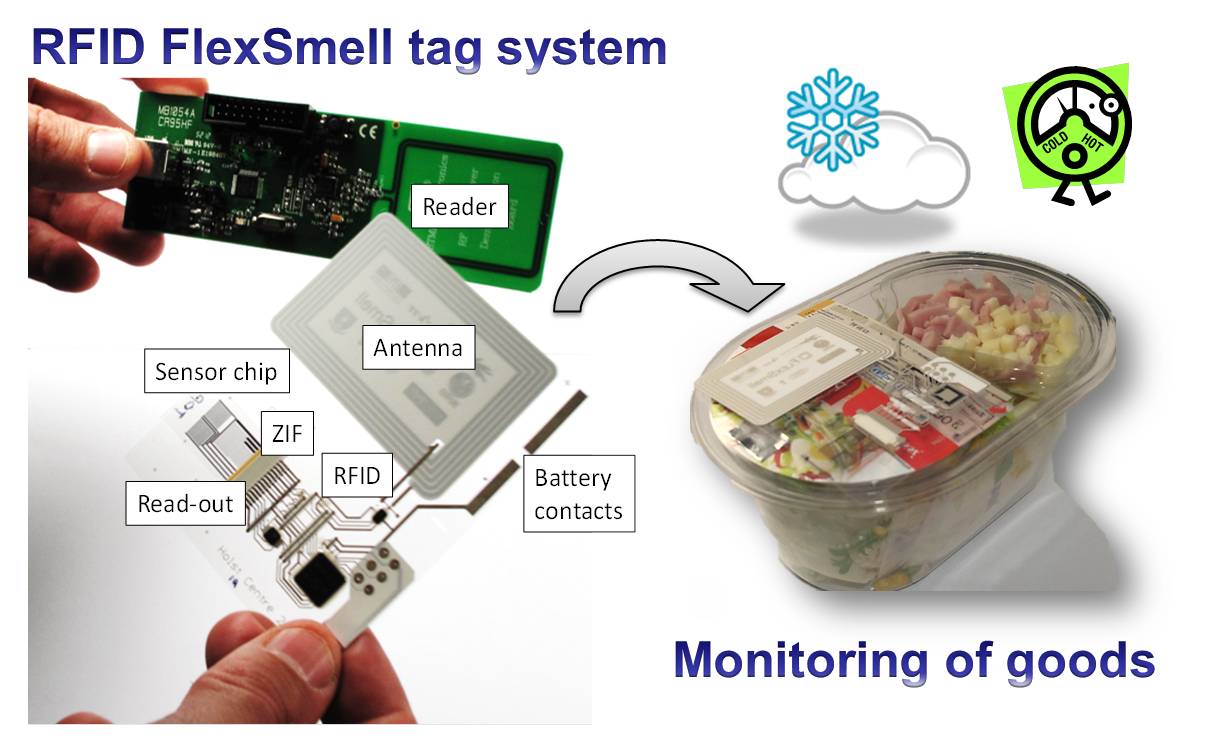Within the frame of the FlexSmell EU project, an RFID tag has been designed and fabricated including a sensor chip, an HF antenna, an RFID chip and memory/read-out chips, on polyethylene terephthalate (PET) substrates. The antenna and PCB were printed using screen printing techniques at Holst Center, while the multi-sensor foil was developed in parallel on a different foil using inkjet printing. Figure 1 shows the smart tag (reader and different components) and a possible application of perishable goods monitoring. For this prototype and proof of concept demonstration, the interconnection between the sensor foil and the tag foil were made with a zero insertion force connector. The final prototype will be assembled using foil to foil integration techniques. As an optimized procedure we have in mind to print completely the circuit, antenna and sensors in one single step, using one foil approach.

Figure 1: FlexSmell RFID tag with indication of its components.
The FlexSmell RFID tag has the ability to measure gases (e.g. humidity, ammonia, VOCs) using two interdigitated capacitors (IDE) and resistive sensors. Additionally, the label is able to measure temperature using a resistance temperature detector (RTD) and provide heat through a low resistance heater, to enhance the gas sensing performance. It can be accessed and read through an RF reader and a PC interface. It is possible to operate the tag in online mode (values are read directly from the computer screen) or in offline mode (data is saved to a rewritable memory for later access) thanks to the implementation of a battery.
Scientific publication
A. Vasquez Quintero et al., Smart RFID label with printed multi-sensor platform for environmental monitoring, Flexible and Printed Electronics, 1 (2016) 025003.
Contact person: Dr. Danick Briand